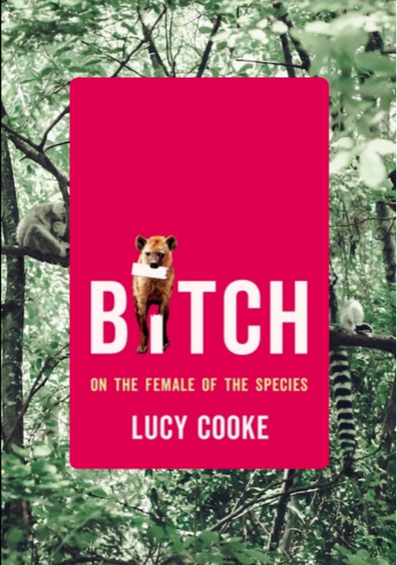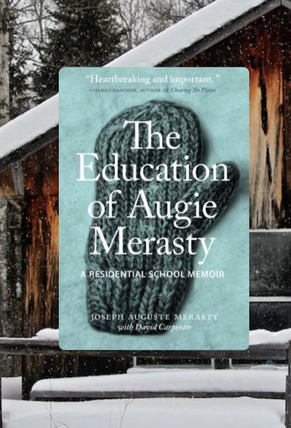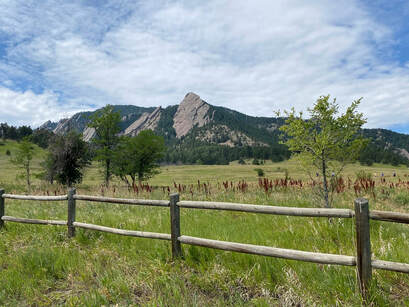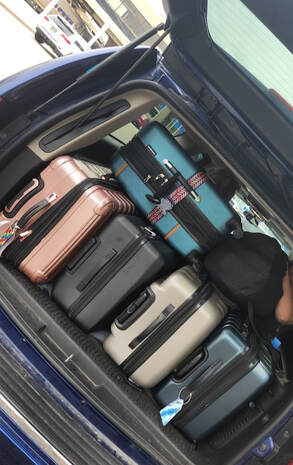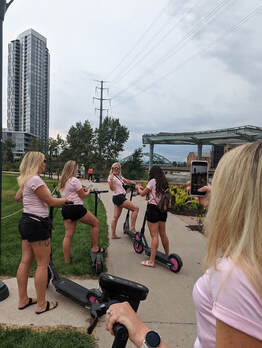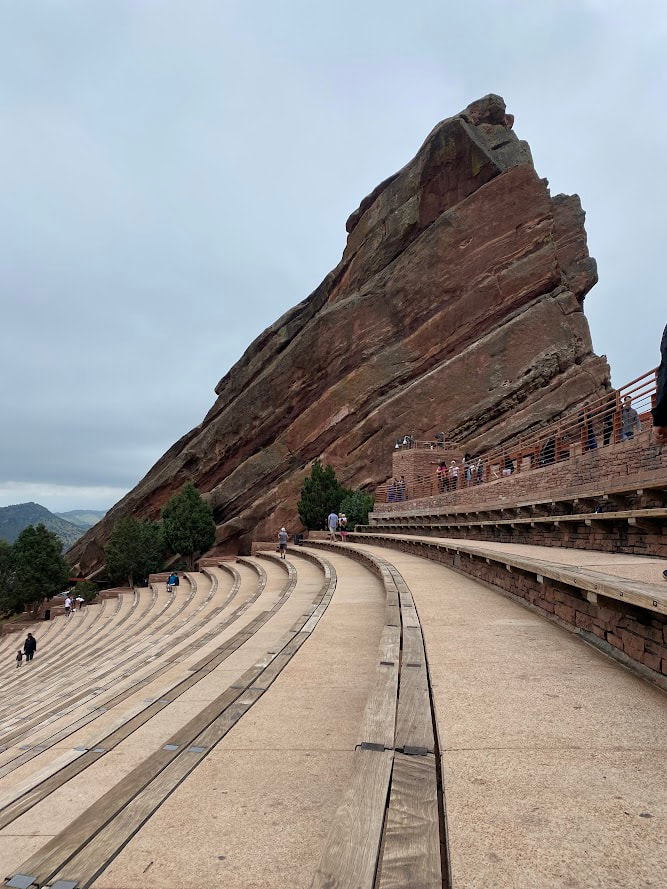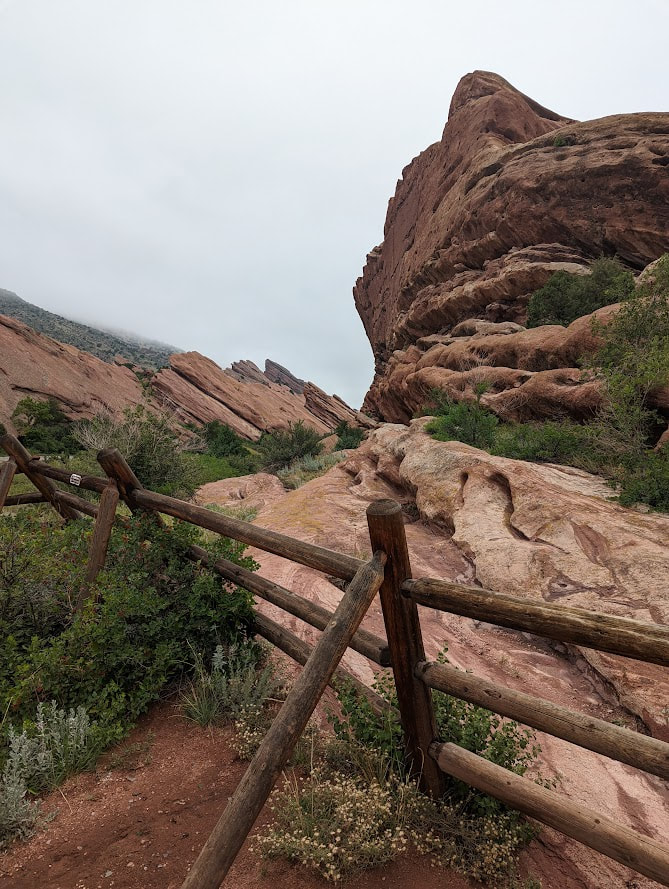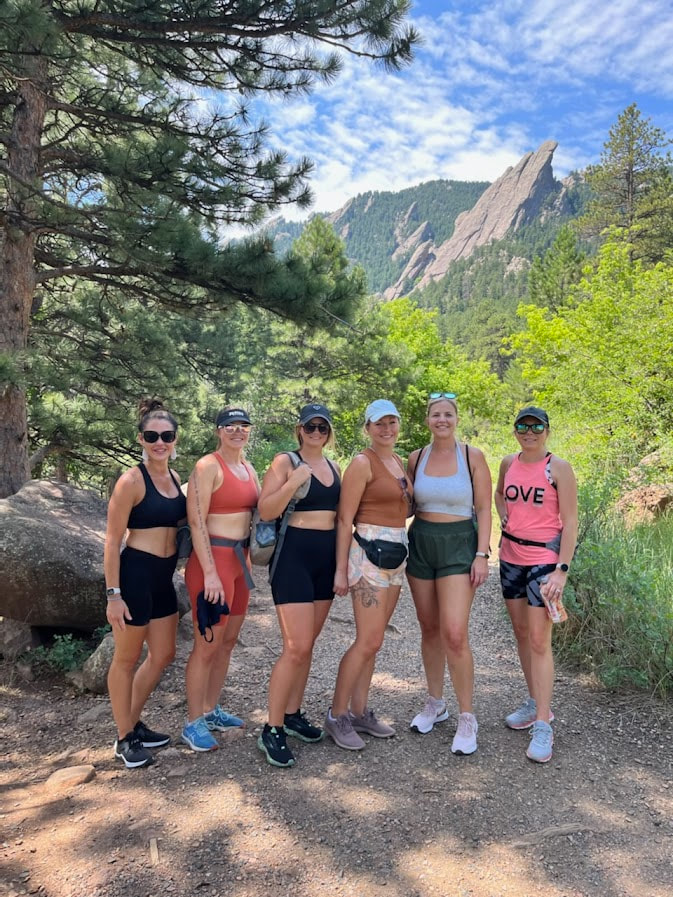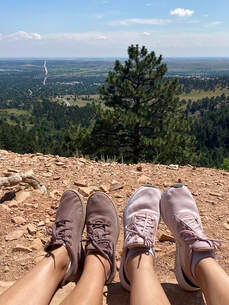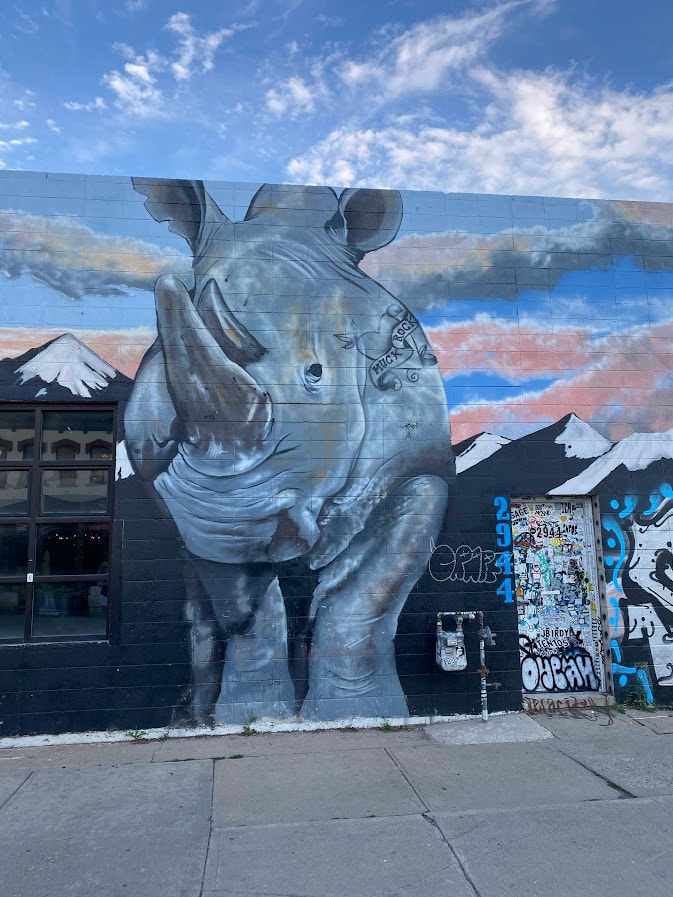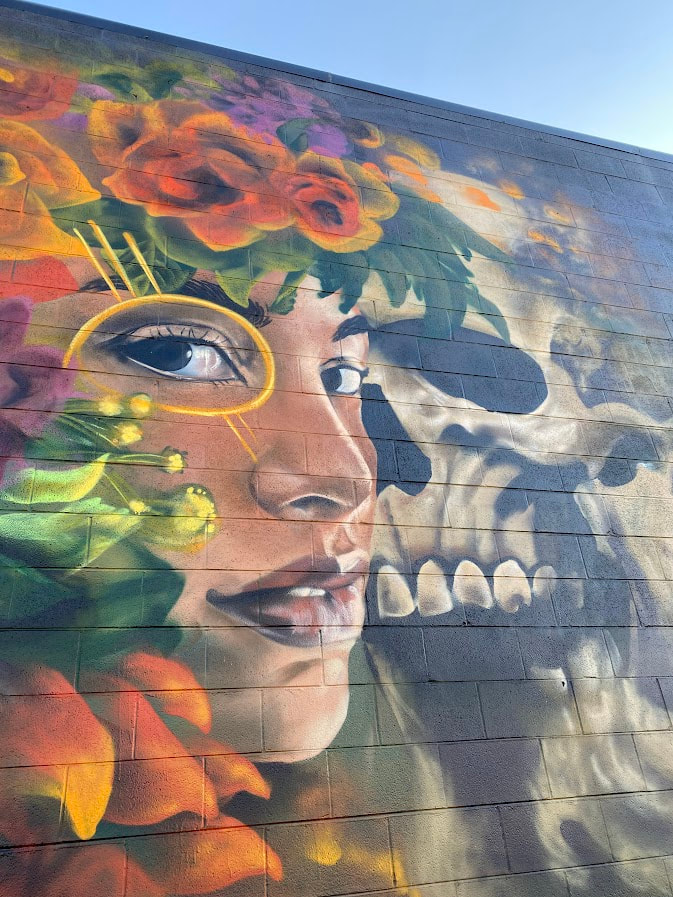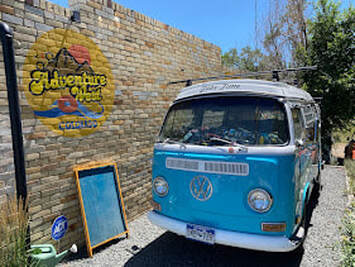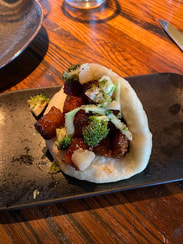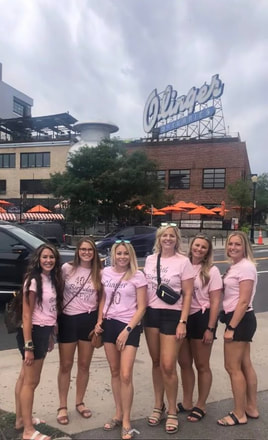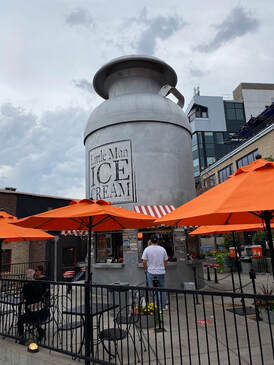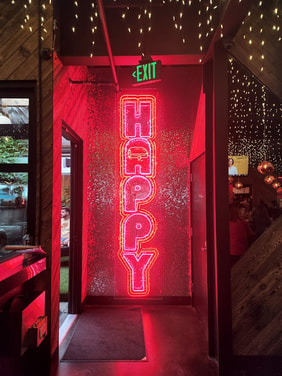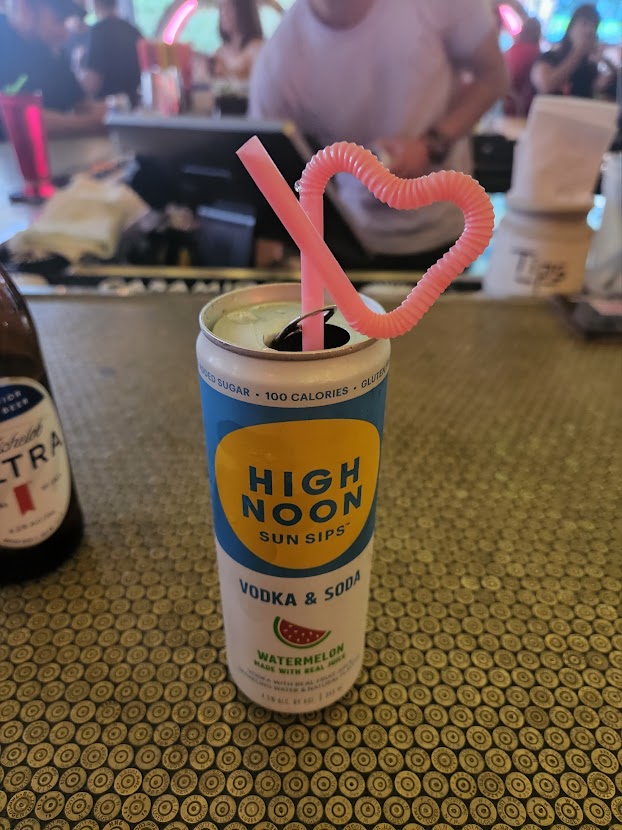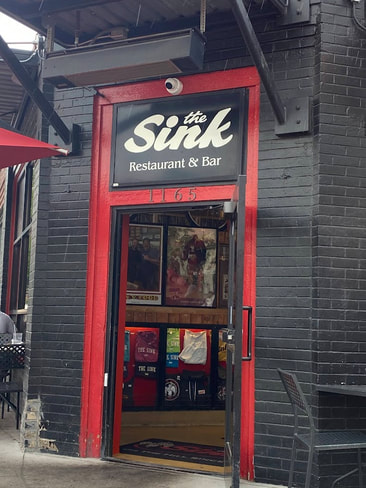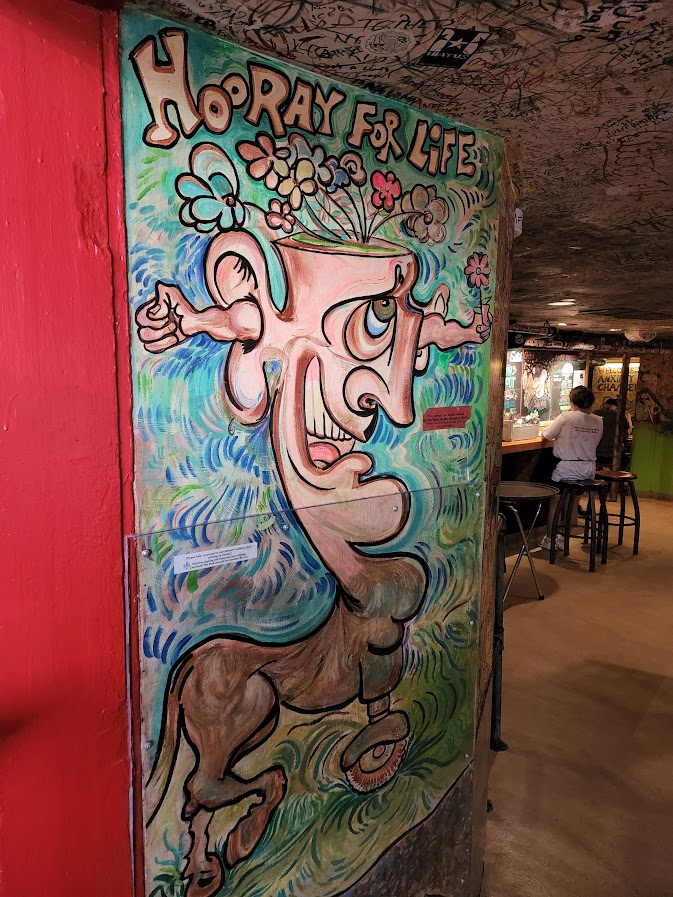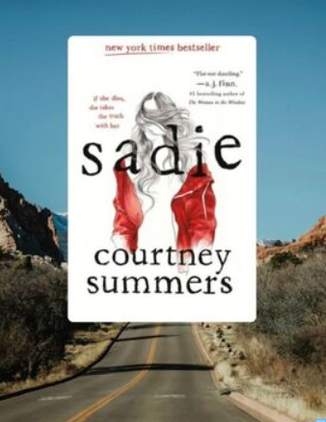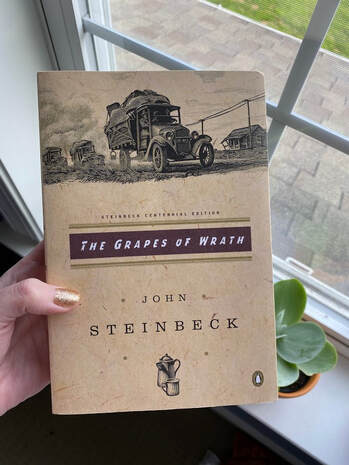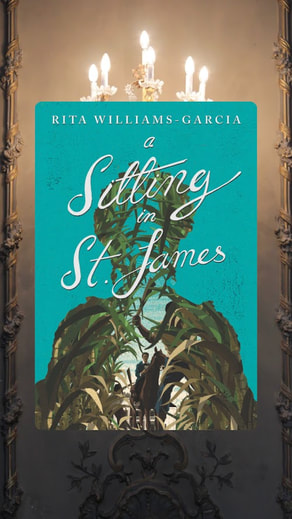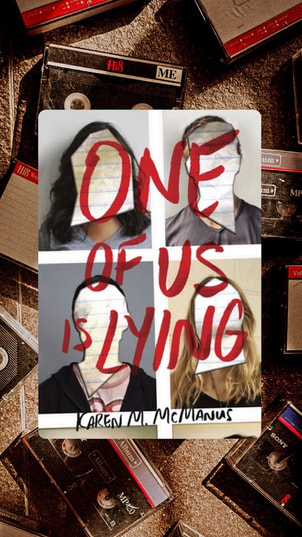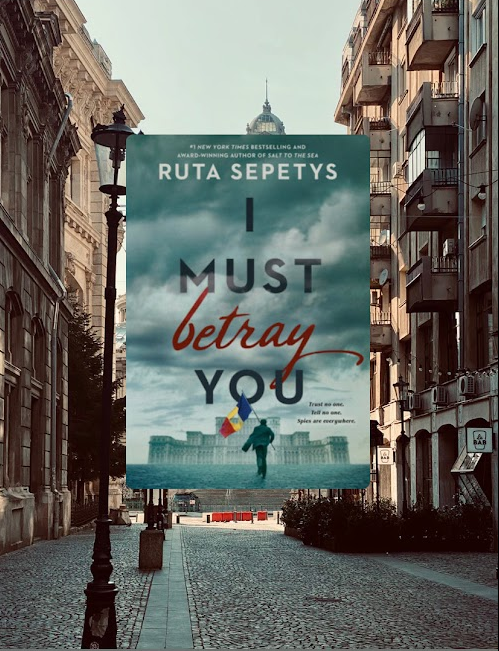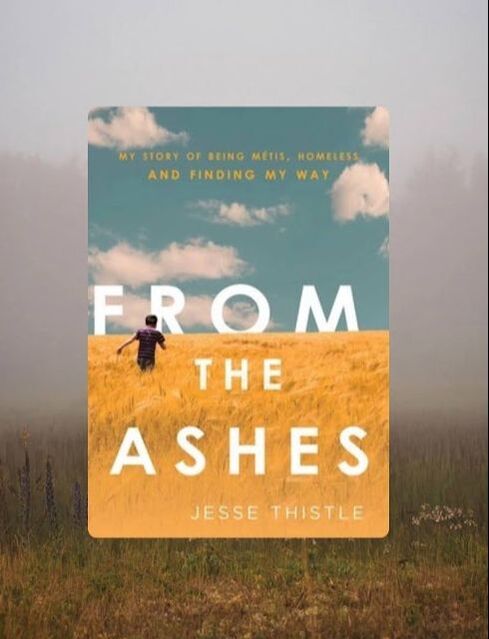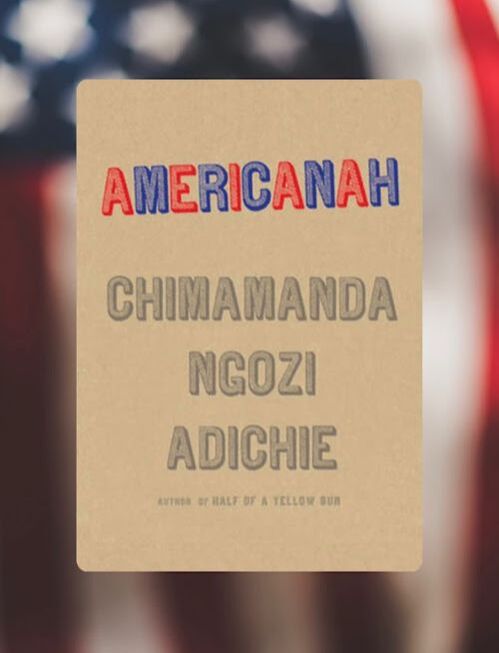|
This book blew my mind, and it's the perfect review for International Women's Day. Immediate reactions upon putting this one down:
Female scientists are my new personal heroes. Female animal species are fiercely bad ass. Evolutionary biology is downright hilarious. Lucy Cooke enters Charles Darwin’s world of male-dominated evolutionary biology and slaps it silly. Most of what we know about the animal kingdom comes from the heavily Victorian sexist views of Darwin’s time; males are dominant, driving the evolutionary process, and females are passive, primly waiting around for the male species to lead the charge in determining evolutionary change. Not only did Darwin’s own letters implicate his sexist viewpoints, but studies from other prominent male scientists during this era have since been discovered as invalid for eliminating data that did not jive with Darwin’s assertions of male dominance. Who’s going to refute “The Father?” Thankfully a lot of female scientists pointed out the problems with these convenient omissions. Cooke drives home this point with a dizzying array of examples from the animal world. One contribution to evolutionary bias is the fact that female genitalia simply hasn’t been studied as much. Duck vaginas have adapted into a spiral shape in an opposite direction of their male counterparts thus allowing them to control paternity. Dolphins control insemination of their eggs. As female sex organs are studied more, the assertion that male anatomy is dominant peters out. Sexual selection has also been controlled by the scientific community’s androcentric view. Darwin theorized that males are always the aggressors, but the animal world proves otherwise. One particular antelope species finds the females doing the fighting, using their antlers to fight for the best males during mating season. Scientists assumed the female antlers were evolutionary remnants with no significance, but this has been proven incorrect. Ringtail lemurs in Madagascar are fully dominant over territory and harass males in terrifyingly violent ways for food and prime sun spots. Cooke also spends a lot of time laying out evidence for how sex defies rigid binary limitations. For example, 40% of albatross monogamous partners are lesbian. A Hawaiian species of morning gecko repopulates by cloning their own babies without sperm. The entire population of gecko is female. When scientists begin eliminating natural biases about sex and evolution, a whole new fluid world of understanding is revealed. Cooke manages to make evolutionary biology a rollicking good read; her humor is randy but raucous in the most perfect blend.
0 Comments
This is a tough one to review for multiple reasons. It’s almost as if it’s two separate books in one. Augie Merasty begins writing a memoir of his forced time in Ste. Therese, a residential school in Canada. He wants help and writes a letter catching the attention of a former English professor, David Carpenter. Over the course of many years, David and Augie correspond back and forth with Augie sending bits of his life story. David opens the book with a very long account of his contact with Augie and the difficulty he has in compiling a full story. Augie is ravaged by alcoholism and is at one point, homeless. David often has a hard time getting Augie to respond to questions as he tries to help with the memoir. David’s portion of the book is excessively long, and while I imagine it’s included to provide background on why Augie’s actual memoir is so brief, it’s unnecessarily cumbersome. The thing that struck me the most about Augie’s retelling of his life story is that although he experienced horrific sexual and physical abuse at the hands of Catholic church leaders, he was still able to share stories of kindness and compassion that he experienced from Sister St. Alphonse, Sister St. Famille, and others. He recognizes the humanity in people even though they failed him. I don’t know how people can face such severe trauma and still see the good in humankind. The brutality of his forced assimilation is heart-breaking, and Augie is clear that the hypocrisy of religious leaders abusing children, looking the other way, depriving them of nutritious food and then parading in buffets when the Bishop comes to visit, is the worst kind of prison. The main goal of these government funded schools was to destroy everything Indian in a child. They were stripped of their language, their identity, and dignity. Augie’s words are powerful and somber, but his voice is surprisingly hopeful, and even humorous at times – a compelling model of resiliency.
Prologue Colorado is an outdoor lover's dream, and I feel like Denver may have personally invited me to move there after this most recent trip. This state is to travelers what the "fun aunt" or "funty" is for nieces and nephews. You feel like you're getting away with something because you get to play outside all day, eat cookies for dinner, and see some kooky stuff in her house. Also, Aunty Colorado is so damn nice. Like really nice. She genuinely cares about you. I spent five days in and around Denver on a girls' trip, and the group wanted a mix of party time in the city with a healthy dose of hiking and adventure. I feel like we killed it in this department. We crammed in nature with some day trips to Red Rocks, Golden, and Boulder, sprinkling in the cringy but obligatory, matching shirt, girl-gang-thing in downtown Denver.
Turning Pages
The Flatirons, Boulder I mean, just look at the picture above; these sandstone formations make for an impressive view when you first pull into the parking lot at the Chautauqua Park Trailhead. We spoke to a trail guide who recommended the Wood's Quarry and Stone House Loop ending on the Enchanted Mesa. I'm so glad this guy was there because the trail was incredible. The high point was the stone chair set-up to rest your feet, have a little snack and soak in the view. Get ready for a steep uphill climb, but I assure you it's worth the sweat.
Menu Pages
Happy Camper (Denver) This funky pizza joint is a dizzying assault on your senses but in the best way possible. There are crazy seating arrangements, bright colors, and varied textures. This place was packed; reservations are a must. The whole vibe screams relaxed, good time. Appendix: A Hodge Podge Denver Dierks Bentley's Whiskey Row - huge restaurant where they move all of the chairs away for late-night dancing. I can't say it's anything special, but as a big group of girls, we had a blast here. Hayter's & Co - sports bar and restaurant right near Coors Field with a great rooftop Finn's Manor (RiNo) - funky cocktail bar with lots of rustic outdoor seating and food truck service. Some food was literally served out of an old, stationary, rusted truck with a grill set into it. The whole set-up is trendy and a great space for large groups. Golden The Golden Mill - You can see this restaurant/bar from your tube on Clear Creek right as you're getting close to the end of your whitewater trip. It's a self-service bar where you get a card upon entry and fill up your own glasses with tons of drink options. The margaritas were absolutely delicious. Order food from various different windows including tacos, BBQ, and other American classics. This is a great place to relax after a day on the water. Shopping in Golden - There are tons of quaint general stores in Golden with adorable Colorado and Coors merchandise. I'm a sucker for an old-timey general store, so I got lost here for quite a long time. Postscript: What I Missed I could probably go back to Denver ten more times and not see enough. It's a special place. Here are some of the things on my list for the next time: Rocky Mountain National Park - Obviously, this was dumb to miss, but it just wasn't that kind of a trip. We wanted shorter hikes and this national park deserves a lot of time. We also didn't plan ahead and make a reservation in enough time. You absolutely have to go here when in Denver. Denver Botanic Gardens - stroll through a vast expanse of different environments Union Station - dining and shopping center located in a working train/bus station Coors Field - catch a game and/or a tour of the stadium Coors Brewery - get a reservation for an hour-long guided tour, ending in a tasting room Larimer Square - lively section of downtown Denver filled with shopping, entertainment, and restaurants Meow Wolf - immersive contemporary art museum that feels like it was produced by what can only be described as if a fun house, a ghost house, a carnival, and an art gallery had a baby. Sadie is set in Colorado! Sadie’s story is told through the lens of a serial podcast which is a pretty cool way to start off a young adult contemporary mystery. Everyone I know, including myself, is obsessed with true crime and the podcasts that keep us all up late at night worrying about every creepy sound. Yet, we keep listening to them over and over again anyway. What is wrong with true crime junkies? What’s wrong with us? Why do we have this macabre pull to delve into the details of horrific crime? Whatever the reason, author Courtney Summers is cashing in on this twisted love of crimes and the podcasts that explore them. Sadie raises her younger sister, Mattie in a small town, trying desperately to save her from the life of drug addiction and the carousel of men that plague her absent mother’s life. Mattie goes missing and turns up dead, sending Sadie on a journey throughout Colorado to find understanding about her own trauma and to avenge her sister’s murder. West McCray hears about the sisters and starts to piece together the tragic saga of Sadie’s disappearance in hopes of also discovering what happened to Mattie. He shares his investigation in a podcast, and you’ll be on the edge of your seat, tearing off your fingernails, and skipping over pages to find out if West finds Sadie before it’s too late.
This story is dark, and Sadie’s voice is appropriately detached and haunted. She’s been forced to forgo her childhood and take care of her sister in a small, isolated town with few resources. When her world is upended, she becomes singularly focused on making it right. The podcast setting was fascinating and a really smart move by Summers. It definitely reads like a true crime podcast, but Sadie’s narration is also key to the emotion and pull of the story. This is my husband’s favorite book, and he’s been badgering me for years to read it. I always drag my heels when it comes to classics; there are just too many new books that I want to read instead. He wore me down, and I guess I’ll admit defeat. This is an epic novel that captures the prolonged sorrow and fury of migrant families during the Great Depression. The term epic gets thrown around a lot in the book review world, but if I had to give an example, this book would be in the top five. The profound themes reflect the history of the Great Depression but more importantly the humanity of people who find themselves destitute and still able to show kindness and compassion. The main character, Tom Joad, is fresh out of jail, looking to return to his family home. As he meets various people on his journey back, he learns that farm families have been evicted by banks, and people are leaving in droves for California, looking for work and shelter. Steinbeck’s writing is terrifyingly real as he depicts the mass migration with raw, descriptive power. Tom eventually finds his family, and as they too succumb to the draw of California, they encounter one trauma after another, rejected by their fellow Americans. The themes that persist despite their hardships are steadfast dedication to family and the power of pulling together in hard times. The “we take care of our own” vibe persists throughout the book. The final scene of Tom’s sister helping a dying man is a shocking climax to this universal idea of the human experience as one of compassion and altruism. The Grapes of Wrath is classic for a reason, and the rise of fire and dust is still relevant today.
This historical fiction novel explores the complexities and atrocities of antebellum New Orleans on a struggling sugar plantation, Le Petite Cottage. It’s disturbing and grand, horrifying, and eye-opening. It’s one thing to suggest that slavery is atrocious and it’s another to show how slavery stripped human beings of their dignity and self. The violence and sexual content are difficult to read but necessary at the same time. The realities of chattel slavery cannot be censored or glossed over. Rita Williams-Garcia weaves a cast of characters together revealing the many layers that exist between White plantation owners and the people they enslave. Matriarch Madame Sylvie Bernardin de Maret Dacier Guilbert dreams of her glory days in the French royal court. She was taken from France as a child and married off to a plantation owner. She’s arrogant, shrewd, entitled, and thrives on class and racial distinction. Her adult son, Lucien, is equally foul, and they enjoy battling each other for superiority. He tries desperately and pathetically to launch Le Petite Cottage out of debt when he’s not too busy preying on slave women. While Williams-Garcia exposes the Guilbert family’s truly depraved qualities, she also juxtaposes those against painful and tragic events that make them empathetically human. She paints them in dappled shades of darks and lights that are uniquely emotional for readers. Madame Sylvie is both fragile and jagged as her slave servant, Thisbe, wipes her, dresses her, and learns that Madame named her after Marie Antoinette’s dog. Williams-Garcia is a master at ushering the reader to both hate and feel pity for Madame Sylvie as the wretched creature’s big sweeping desire is to sit for a portrait so she can hang onto the last scrap of her legacy. Her grandson and heir to Le Petite Cottage, Byron, lives a double life as a West Point cadet, madly in love with his best friend, Pierce. Lucien does his best to force Pierce to “be a man.” Thisbe is a major character, and although she’s Madame’s personal house slave, isolated from her family day and night, she’s ostracized for having it easier when that’s anything but accurate. Williams-Garcia shows the complex layers of emotion that exist between slaves as they are pitted against one another for favor and survival; the unspoken rules on “how to act” when Whites are around serve as a uniting element. Thisbe “knows her place,” but she’s sharper than Madame Sylvie. She holds her ground, and when Madame Sylvie is at her weakest, Thisbe makes a bold move. A Sitting in St. James is epic, and the tangled emotional impact is jarring. A great book makes you feel, but an epic book makes you question your feelings. This one will sit with me for a long time.
The eighties movie, The Breakfast Club, has always been one of my favorites – a collection of high school student stereotypes all stuck in detention together, discovering that they share more in common than they ever realized. Karen McManus must have been a fan. She does the movie proud but with an added contemporary murder mystery twist, and I loved it. McManus sets this series opener off with a bunch of kids thrown together in detention who end up witnessing the death of another student. They’re all from different cliques but are bonded together as accusations are cast upon each student, and rumors swirl in the surrounding community. Sketchy history comes to light giving each student from detention the motive to commit the murder. Or was it suicide? Or was it something else entirely? McManus keeps readers guessing up until the very end. Her character arcs all happen outside the detention room which is a big diversion from The Breakfast Club movie in addition to the murder mystery element, but the inspired portions are quintessential nostalgia for adult readers. Relatable, unpredictable, angsty thriller fun for teens and adults! The third book is set to come out in 2023.
This is not the first of Ruta Sepetys’ books that I’ve read, and it certainly won’t be the last. She’s a master of storytelling and highlighting under-represented events and periods in history in a way that’s relatable for young people. Her latest is another young adult historical fiction that sheds light on the Nicolae Ceausescu dictatorship and communist rule of Romania in the late 1980s. Romanian citizens lived in terror due a vast and intricate spy network composed of ordinary citizens set up to spy on one another for government favors including food, medicine, and electricity. Families and neighbors, teachers and students, coworkers and friends are all starving, paranoid, and constantly looking over their shoulders worried about who will turn them in for voicing even the slightest bit of discontent over Ceausecscu’s rule by isolation, deprivation, and fear. Homes are bugged. Food rations are extreme. Everything is illegal from Coke and Twinkies to western magazines and typewriters. People trade in Kents (cigarettes). This is the world that teenager, Cristian Florescu, is being raised in. He dreams of being a writer, keeps a secret notebook, and instead of dreaming about his future, he watches his grandfather slowly dying and his parents suffering in silence. Cristian finds himself at the mercy of the secret police, Securitate, as they force him to become an informer, using him to spy and report back for medicine for her grandfather. His efforts at subversion reach a tipping point when the Romanian revolution takes hold, and Cristian can no longer be part of the silence. His rage and frustration are loud, and he takes brave risks to become part of the solution to expose the country’s suffering to the world. Sepetys sears this story into your heart. Cristian’s longing, fear, and passion jump off the page and make him come alive. The country’s suffering is heartbreaking. This is a fascinating, somber, and hopeful historical piece that you can only come away from in awe.
A billionaire’s mansion. A cryptic will. Four alluring grandsons. A family inheritance denied. Secret passages. Is it all just a game left by a twisted, rich old man or is there something deeper to the mystery of why Avery Grambs was left a fortune from a man she’s never even met or heard of? Jennifer Lynn Barnes knows how to keep a reader glued to the pages. This is a breezy, fun delight. Barnes jumpstarts this young adult mystery trilogy with puzzles and twists right from the first few pages. Avery just wants to get out of high school and move on with her life. Billionaire Tobias Hawthorne dies and bequeaths his estate and entire fortune to her. To claim her inheritance, she must move into the sprawling Hawthorne House and stay there for a year. The house is filled with intrigue including the entire disinherited Hawthorne family, and most of them are not too thrilled with the interloper. Who is Avery and why did Tobias leave her everything, cutting the family out entirely? Together with the four handsome Hawthorne grandsons, Avery sets out to discover the truth about the mansion and the old man’s penchant for riddle and games. There’s a lot of lusty tension brewing in between a love triangle of sorts which just adds to the suspense of turning each page. I’m a huge puzzle nerd, so I love the juxtaposition of romance with a clue-based contemporary mystery. Inheritance Games is just plain fun.
Jesse Thistle’s account of drug addiction is scalding and downright painful. I winced repeatedly throughout his story; his voice is so raw and uncomfortable that my skin was crawling. How can someone be on the brink of destruction for so long and come out on the other side? Jesse was abandoned by his parents and lived with his brothers in foster care for a short time before finally ending up with grandparents. Jesse’s cycle of alcohol and drug addiction leaves him homeless and struggling on the streets of Canada. The memoir focuses on the trauma and shock of his downward spiral. It’s unsettling but a vivid portrayal of poverty and addiction. I wish more time was given to the story of his recovery. Jesse’s redemption and the awakening of his Metis heritage is a brief wrap-up at the very end of the memoir and doesn’t bring the reader to a full circle understanding of who he becomes in the end. This memoir is searing but I wanted a little more understanding of how he was able to turn things around by becoming a scholar, fully enveloped in the richness of his Indigenous culture. Prepare yourself to squirm; this one is cringy and downright guttural at best, but a worthy read nonetheless – a glimpse into the abyss.
I expected to fly through this and then gush over it with my other book friends but instead, I slogged through for weeks and found myself avoiding it entirely. It starts with an engrossing love story between Ifemelu and Obinze as young Nigerians. Ifemelu heads to America with the plan for Obinze to join her, and things don’t happen as they intend. Ifemelu is faced with what it’s like to be Black in America and begins writing a blog. Her reflections on race, culture, identity, and immigration are thought-provoking and eye-opening. She writes about what it’s like to be Black in Nigeria versus in America. When Adichie leads with her characters, the book is amazing. When she strays and takes on commentary, it gets choppy, long, and burdensome. Her heavy introspection forces the plot away from the characters and loses the beautiful story-telling that captured my interest early in the book. I longed for Ifemelu and Obinze to tell more of their story but by the end, the momentum crashed and burned. It ended up feeling like a set of disconnected short stories with a thin thread of commonality that never created anything whole.
|
AuthorTravel All the Pages is inspired by my two loves - travel and reading, a combo I can't resist. Enjoy these little pairings. Archives
March 2023
Categories
All
|
